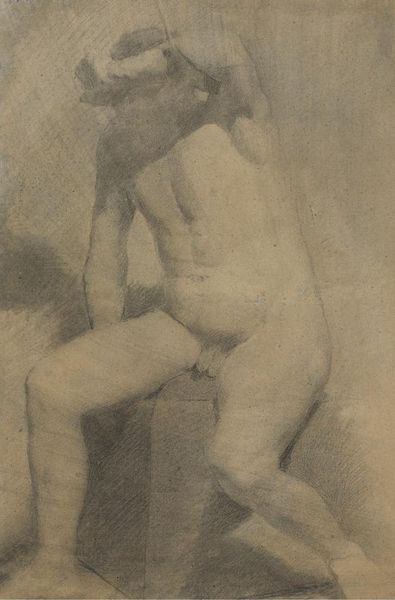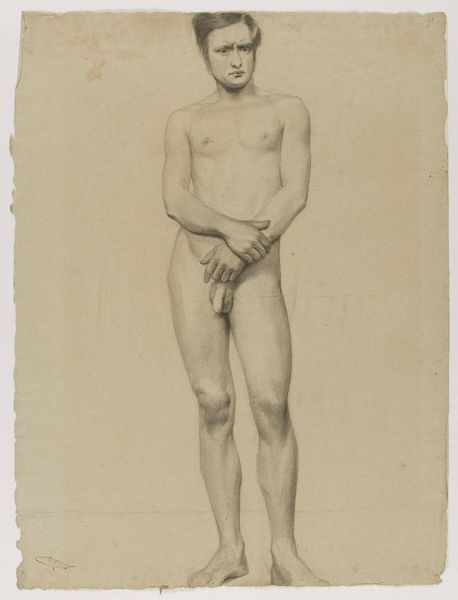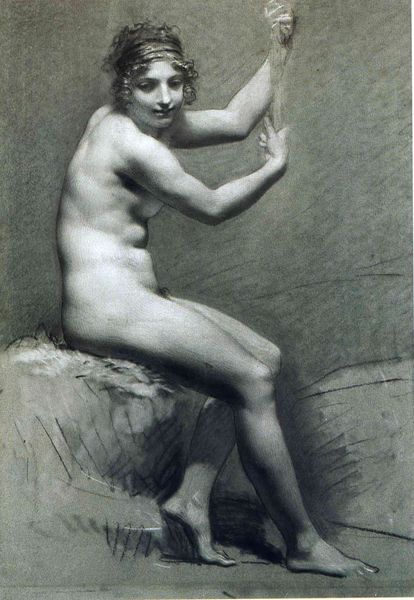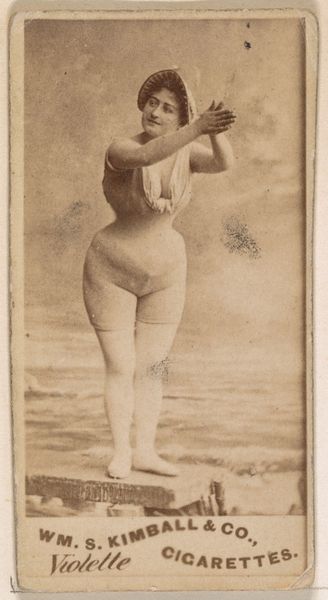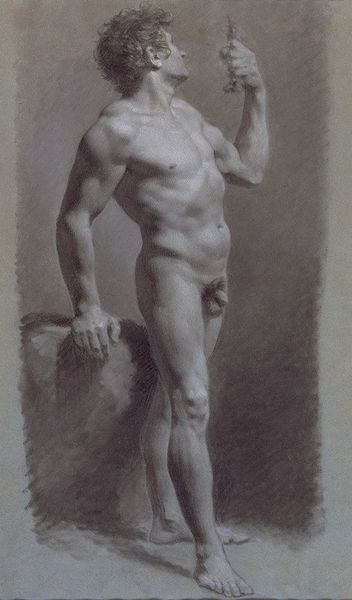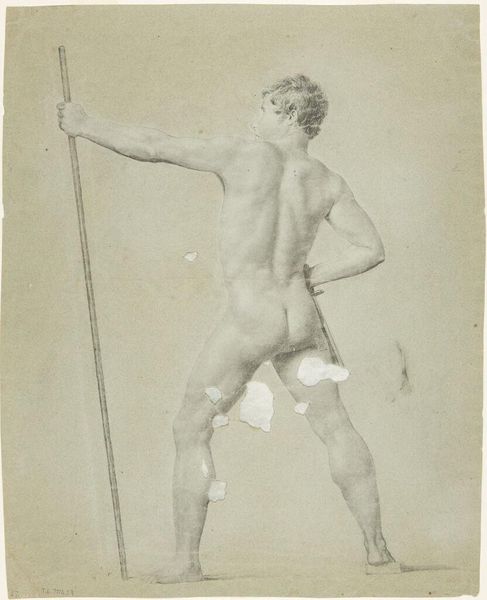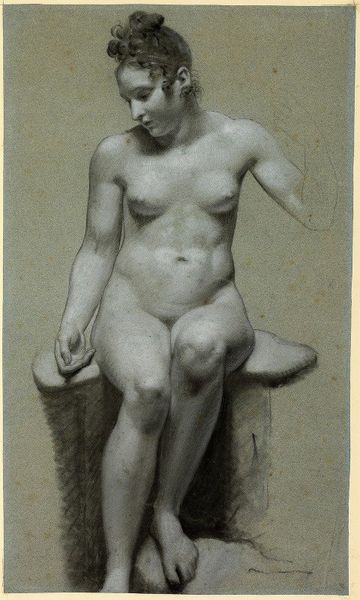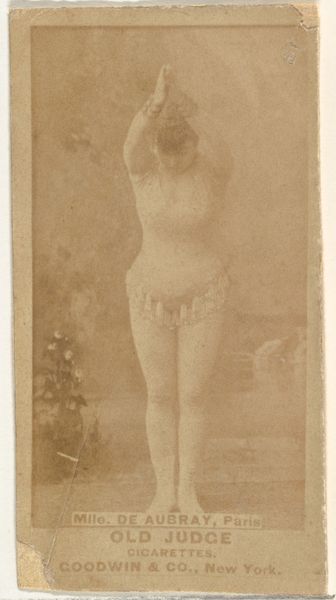
drawing, charcoal
#
portrait
#
drawing
#
neoclacissism
#
charcoal drawing
#
figuration
#
charcoal
#
charcoal
#
nude
Copyright: Public Domain: Artvee
Curator: This haunting image presents us with Pierre-Paul Prud'hon's charcoal drawing, "Adonis," created around 1810 to 1812. The soft gradations of light and shadow lend a classical yet melancholic air. What do you see in it? Editor: I’m immediately struck by its ethereal quality. The figure seems to emerge from the very paper, almost like a phantom. It's incredibly tactile, even though it's just charcoal. The hazy background makes the material seem like a kind of primordial ooze giving shape to this beautiful male form. Curator: The figure, a rendering of Adonis, embodies ideal masculine beauty and alludes to the tragic story in Ovid. The vulnerable pose with hand slightly raised adds to the feeling. Prud'hon used charcoal extensively, as the softness enabled him to capture this Neoclassical aesthetic. How would the material itself have added meaning? Editor: Absolutely. Prud'hon's choice of charcoal, a readily available material, points to the practical realities of art production. We think of the "high art" subject but must acknowledge the labor. Charcoal offers immediacy; sketches allowed him to explore form economically before a formal treatment in paint, or as an exploration and study itself. I am intrigued by the history embedded in such humble stuff. Curator: And this sketch is particularly revealing because the figure of Adonis himself holds complex layers of meaning. His beauty led to an untimely death. Prud'hon's contemporary viewers may well have appreciated these loaded classical allusions. The sensitivity captured transcends mere classical form. Editor: Agreed. It brings up an interesting point, the shift from grand allegorical history paintings into intimate sketches that, at the time, spoke more about the material means of producing them than immortal, masculine form. It makes you consider the role that this new availability of accessible methods had on art's purpose during this time. Curator: Precisely! In exploring Prud'hon’s choice of materials and imagery, we get such deeper knowledge about the moment it was made, and its endurance through time. Editor: Well said! Thinking about it, there are ways the simplest means and richest stories overlap more profoundly than we thought!
Comments
No comments
Be the first to comment and join the conversation on the ultimate creative platform.

